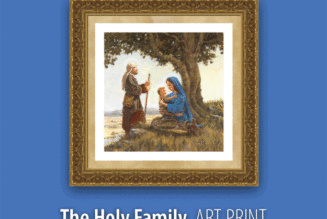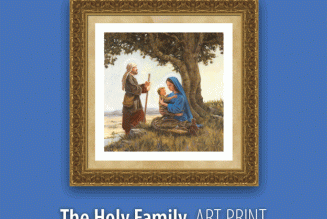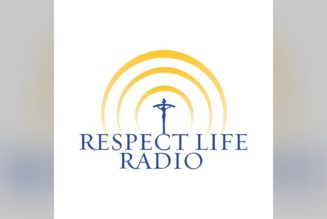“Bourbon is good medicine!” Or so claimed the lobbyist looking to leave a loophole in the 1919 Prohibition Act that banned all alcohol except that which was used for religious sacraments and those medicinal distillates prescribed by doctors. While the slogan was exaggerated by politicians (and exploited by the usual assortment of snake-oil salesmen), it turns out there was some validity to the claim. Bourbon is indeed good medicine, and that’s the truth — or, if it isn’t, it ought to be.
In addition to being a beloved social accelerant, an effective community builder, and a warming nightcap, bourbon possesses properties unique among distillates. While many other types of alcohol are known for having high levels of antioxidants, American bourbon, with its high corn mash and aging in new charred oak barrels, has high phenol levels and is specifically abundant in ellagic acid, an acid that is well-known for fighting carcinogens.
Now, before you try to justify using your health savings account to purchase bottles of Pappy 23, let’s review the basics of bourbon and learn how to properly enjoy its social and medicinal benefits. (Readers who, for medical or other reasons, cannot imbibe such a libation will find a recommendation for a non-alcoholic bourbon worth its salt at the end of the article.)
Whiskey is a distilled grain alcohol that is typically aged in wooden barrels. Bourbon is an American whiskey that is made from at least fifty-one percent corn and aged in new, charred American oak barrels. Many components contribute to the finished product: the mashbill (i.e. the mixture of grains used); the length of fermentation; the size and type of barrel (and the severity of its char); the source of the water; the aging process; and, of course, the all-important local lore.
Making whiskey is surprisingly simple, but nuances in ingredients, subtleties in production methods, and distinctive regional characteristics can create a flavor complexion that defies easy description. How do you describe the ineffable? It is not uncommon to hear such enigmatic expressions as “notes of crisp cola, drenched in ash, with a splash of salty ocean spray and taffy” to describe whiskey.
The Storied History of Bourbon & the Bourbon Trail
The development of good whiskey in Kentucky is likely attributable to a combination of factors: its water, its climate, the grains available, and, no doubt, a good deal of providence. Add to these the region’s cool response to Prohibition and the presence of a fervent Catholic population in Bardstown, and you will start to understand the (possibly) true history of whiskey in Kentucky.
What we do know is that the area between middle Tennessee and middle Kentucky became the official home to whiskeys made with a mashbill using a higher percentage of corn. The stuff made in and around Bourbon County, just north of Lexington, became the type for the bourbon-making process that is now shared by all of the major bourbon producers of Kentucky. As with wines from France, where grapes and yeast grow in very specified regions, authentic bourbon comes from bourbon country (note the “r”), a region geographically limited to a triangle between Louisville, Lexington, and Bardstown, none of which are in Bourbon County. The Bourbon Trail is a loose network of distilleries confined to the region whose histories often overlap. Fine bourbons may be found elsewhere in America, but for the purist, the Bourbon Trail is the richest source.
The distillers in the area have long histories with each other and complex relationships, which reflect centuries of American economic and political machinations. The biggest disruption to the industry was the post-war ratification of the Eighteenth Amendment, which banned the manufacture, sale, and transport of all “intoxicating liquors.” It left it up to states to decide how to define intoxication and how to enforce the law.
For the most part, the disruption bred creativity. Prohibition wasn’t particularly popular (or enforceable) in most places, and it proved to be a political landmine for state and federal representatives. Prohibition was passed by the House on October 10th, 1919, but it was vetoed two weeks later by President Woodrow Wilson. Wilson’s veto was immediately overridden that same day by the House by a 210-73 vote. The next day the Senate confirmed the House’s decision with a 65-20 vote. Prohibition was ultimately repealed in 1933 as a measure to ensure state rights. In addition to its tumultuous legal history, bottling and process patents, guarded recipes, lost rickhouse keys, and kidnapped master distillers, make up the tapestry of lore that gives each bourbon its character.
Is Bourbon “Good” Medicine?
While it’s unclear when whiskey received the moniker, “water of life,” one such legend gives a Scottish etymology (uisge beatha) referring less to what the alcohol does for the liver and more for its social effects in courtship. Modern research provides a more complete picture of its potential health benefits. Its high level of ellagic acid and unique profile of phenols give it a very high level of antioxidant activity in the body. In other words, it can help reduce inflammation and oxidative stress on a cellular level. Also, studies have shown that limited drinking of bourbon can help reduce cholesterol and limit plaque build-up in arteries.
The use of new oak barrels and length of aging increase the phenolic compounds that are present in bourbon, and components such as vanillic acid, which imparts the vanilla taste, and syringaldehyde, which gives a smoky flavor and aroma, are found in much higher levels than in other foods. These polyphenols have unique antioxidant properties and the high levels and proportions in bourbon are thought to contribute to multiple positive health outcomes.
As a whiskey lover, I will claim that I knew this all along, and my growing collection of local and “hyperlocal” bottles is simply my form of medical research. With all joking aside, any health benefits derived from bourbon can be immediately more than nullified by the damage caused by drinking too much of it. Contrary to Mark Twain’s aphorism — “too much of anything is bad, but too much good whiskey is barely enough” — drinking whiskey too much or too fast has clear detrimental effects on both the liver and the brain. Bourbon is best enjoyed in moderation and savored slowly. Not only does this give you the best experience of its flavor, but it also enhances the medicinal qualities of the distillate. As to its impact on courtship, when drunk in moderation bourbon has been (non-scientifically) proven to increase one’s chances of success in meeting a spouse and in having a long, happy, children-filled marriage. Or if it hasn’t been, it ought to be.
How to Enjoy Bourbon
Let’s not overthink this one. You can take bourbon “neat,” meaning, as is, at room temperature — no frills, just the bourbon and the full flavor; or you can have it on the rocks (ice), which cools the heat and tends to tone down the bite and any harshness; or you can take it “with water,” which cuts the heat and brings out the sweeter tastes. Alternatively, you can literally take it “on the rocks” by using frozen rocks to cool the bourbon without watering it down.
You need not be too fussy when it comes to glassware, but what you’re drinking from will indeed affect the aroma and finish. Using the specialized Glencairn glass can help elevate the aromas, but any lowball glass will work.
The pour is generally between 1 and2 ounces. A traditional “dram” is 45 milliliters, or 1.5 ounces. A “finger” is about 30 milliliters or 1 ounce. “Two fingers” is 60 milliliters or 2 ounces, which is considered a full or generous pour.
How you take your bourbon and the amount of the pour, really depends on the bourbon you’re drinking, and what you enjoy. So, try it in different ways and see what suits you.
The descriptions of bourbon flavors are highly subjective and not always helpful. Usually, descriptions include the “nose,”the general aroma; the “palate,” or taste; and the “finish,”the lingering effect.
But, at the end of the day, you really should just find a bourbon you like, learn its storied past, enjoy it, and branch off from there. That’s the proper way to do it. Or if it isn’t, it ought to be.
Join Our Telegram Group : Salvation & Prosperity









